Descrição
O monitoramento da corrosão é um aspecto crítico de manter a integridade das estruturas metálicas e prevenir possíveis falhas. Neste artigo, exploraremos a eficácia das sondas elétricas como uma tecnologia de monitoramento de corrosão e destacaremos suas vantagens sobre outros métodos.
Introdução às sondas de corrosão da resistência elétrica
As sondas elétricas são dispositivos usados para medir a taxa de corrosão em amostras de metal. Eles trabalham com o princípio de que a resistência de uma amostra de metal aumenta à medida que sua área de seção transversal reduz devido ao afinamento de corrosão. Isso ocorre porque o processo de corrosão come o metal, reduzindo sua área de superfície e aumentando sua resistência ao fluxo de corrente elétrica.
Para usar uma sonda elétrica, a amostra de metal é colocada em uma solução de eletrólito e conectada à sonda. À medida que o processo de corrosão começa, a resistência da amostra de metal aumenta e a sonda elétrica mede essa mudança na resistência ao longo do tempo. Ao monitorar a mudança de resistência, a sonda elétrica pode calcular a taxa de corrosão, fornecendo informações importantes para avaliar o nível de corrosão e implementar estratégias de mitigação apropriadas.
As informações fornecidas por sondas elétricas são inestimáveis para indústrias como petróleo e gás, marinho e aeroespacial, onde a corrosão pode causar sérios riscos de segurança e financeiro. Ao detectar a corrosão antecipadamente, podem ser tomadas medidas apropriadas para evitar mais danos, economizando tempo e dinheiro. Além disso, sondas elétricas podem ser usadas para monitorar a eficácia dos inibidores da corrosão e outras estratégias de mitigação, permitindo que os ajustes sejam feitos, se necessário.
No geral, as sondas elétricas são uma ferramenta valiosa para monitorar a corrosão nos metais e garantir a segurança e a longevidade dos equipamentos industriais.
Vantagens de sondas de corrosão de resistência elétrica
Comparados aos métodos tradicionais, como cupons de perda de peso, as sondas elétricas oferecem várias vantagens distintas no monitoramento de corrosão. Vamos nos aprofundar nessas vantagens com mais detalhes.
Monitoramento não intrusivo
Ao contrário dos cupons de perda de peso que requerem escavação e pesagem, as sondas elétricas fornecem uma abordagem de monitoramento não intrusiva. Isso elimina a necessidade de procedimentos de escavação dispendiosos e demorados, tornando o processo de monitoramento mais eficiente e econômico.
Compensação de temperatura
A temperatura pode afetar significativamente os valores de resistência obtidos durante o processo de monitoramento de corrosão. Para abordar isso, as sondas elétricas empregam um mecanismo de compensação de temperatura. Ao utilizar um elemento de referência, a sonda de resistência compensa as variações de temperatura e garante cálculos precisos da taxa de corrosão. Essa compensação permite o monitoramento preciso, mesmo em ambientes onde as flutuações de temperatura são comuns.
Compatibilidade com medidas de proteção contra corrosão
Muitos componentes de metal são protegidos contra a corrosão usando revestimentos ou outros materiais anticorrosão. As sondas elétricas, sendo expostas ao ambiente corrosivo como elementos de peça de teste, podem coexistir com essas medidas de proteção. Isso permite o monitoramento contínuo das taxas de corrosão sem interferir na eficácia dos sistemas de proteção contra corrosão.
Sondas filiformes vs. flocos
As sondas elétricas vêm de várias formas, como sondas filiformes e de flocos. As sondas filiformes exibem maior sensibilidade em comparação com as sondas de flocos. Essa sensibilidade torna as sondas filiformes particularmente úteis na detecção de baixas taxas de corrosão e na identificação de sinais precoces de corrosão localizada. Compreender a natureza da corrosão e a seleção do tipo de sonda apropriado é crucial para obter resultados precisos de monitoramento.
Aplicações de sondas elétricas
As sondas elétricas encontram aplicação em uma ampla gama de indústrias e ambientes onde o monitoramento da corrosão é essencial. Vamos explorar alguns aplicativos notáveis para destacar sua versatilidade.
Sistemas pressurizados
Nos sistemas pressurizados, as sondas elétricas fornecem um meio confiável de monitoramento de corrosão. Esses sistemas geralmente envolvem elementos de detecção cilíndrica, com a superfície externa exposta ao ambiente de monitoramento. A resistência do elemento de detecção é medida entre suas duas extremidades, permitindo o cálculo das taxas de corrosão.
Monitoramento da corrosão da erosão
Para monitoramento da corrosão por erosão, sondas montadas em descarga e projetos de loop de arame oferecem sensibilidade aprimorada. As sondas montadas em descarga são adequadas para detectar fenômenos de corrosão por erosão, enquanto os projetos de loop de arame proporcionam maior sensibilidade à corrosão. A seleção adequada do design do elemento de detecção garante monitoramento preciso em cenários específicos de aplicação.
Estudos de corrosão acelerados de fluxo
Em laboratórios que estudam corrosão acelerada por fluxo, são empregados elementos de detecção tubular com altas velocidades de fluido. Esse projeto facilita a investigação de fenômenos de corrosão acelerado por fluxo e permite que os pesquisadores observem a resposta da redução da espessura da parede a vários fatores, como a adição de ácido.
Conclusão:
Uma sonda de corrosão de resistência elétrica emergiu como uma ferramenta valiosa no monitoramento de corrosão, oferecendo várias vantagens sobre os métodos tradicionais. Sua natureza não intrusiva, recursos de compensação de temperatura, compatibilidade com medidas de proteção contra corrosão e recursos de monitoramento em tempo real os tornam altamente benéficos no campo do monitoramento da corrosão.
O monitoramento em tempo real desempenha um papel crucial em vários setores e setores, incluindo segurança de rede e monitoramento de desempenho, gerenciamento de infraestrutura de TI e análise de negócios. Ele fornece resultados imediatos, aprimora a visibilidade do desempenho, automatiza processos de monitoramento, permite alertas e notificações automáticas, facilita melhores análises forenses, garante a comunicação oportuna dos problemas aos usuários e promove o feedback em tempo real. Além disso, o monitoramento em tempo real pode aumentar a produtividade dos funcionários e contribuir para uma melhor tomada de decisão, agilidade dos negócios e detecção e resolução de problemas operacionais.
No contexto do monitoramento da corrosão, a integração de recursos de monitoramento em tempo real com sondas elétricas pode aumentar ainda mais sua eficácia. Ao rastrear e registrar continuamente os instantâneos da atividade de corrosão, o monitoramento em tempo real permite a identificação imediata de possíveis problemas de corrosão e medidas imediatas de resposta. A combinação de sondas elétricas e monitoramento em tempo real capacita os profissionais de monitoramento de corrosão a tomar decisões mais rápidas e orientadas a dados e tomar medidas proativas para mitigar os riscos relacionados à corrosão.
No geral, a integração de sondas elétricas e monitoramento em tempo real no monitoramento de corrosão oferece uma solução poderosa, garantindo a segurança e a longevidade dos equipamentos industriais, reduzindo os custos de manutenção e minimizando o tempo de inatividade.
Alguns desenvolvimentos futuros em potencial na tecnologia da sonda elétrica podem incluir a miniaturização de sensores, recursos de comunicação sem fio e integração com a Internet das Coisas (IoT) para permitir o monitoramento e o controle remotos. Esses avanços podem otimizar ainda mais o processo de monitoramento de corrosão, tornando -o mais eficiente e acessível em vários setores.
perguntas frequentes
Q1: Para que são usadas sondas elétricas?
A1: As sondas elétricas são usadas para medir a taxa de corrosão em amostras de metal, monitorando a mudança de resistência ao longo do tempo à medida que o metal corroa.
Q2: Como funcionam as sondas elétricas?
A2: As sondas elétricas funcionam sobre o princípio de que a resistência de uma amostra de metal aumenta à medida que sua área de seção transversal reduz devido ao afinamento de corrosão. A amostra de metal é colocada em uma solução eletrolítica e conectada à sonda. À medida que a corrosão ocorre, a resistência da amostra de metal aumenta e a sonda elétrica mede essa mudança na resistência para calcular a taxa de corrosão.
P3: Quais são as vantagens das sondas elétricas no monitoramento de corrosão?
A3: As sondas elétricas oferecem várias vantagens no monitoramento de corrosão:
- Monitoramento não intrusivo: Ao contrário dos cupons de perda de peso, as sondas elétricas fornecem uma abordagem de monitoramento não intrusiva, eliminando a necessidade de escavação e pesagem.
- Compensação de temperatura: As sondas elétricas empregam um mecanismo de compensação de temperatura para garantir cálculos precisos da taxa de corrosão, mesmo em ambientes com flutuações de temperatura.
- Compatibilidade com medidas de proteção contra corrosão: As sondas elétricas podem coexistir com medidas de proteção contra corrosão, como revestimentos, permitindo o monitoramento contínuo sem interferir na eficácia dessas medidas.
- Sondas filiformes vs. flocos: As sondas elétricas vêm em diferentes formas, como sondas filiformes e de flocos. As sondas filiformes oferecem maior sensibilidade, tornando -as úteis na detecção de baixas taxas de corrosão e sinais precoces de corrosão localizada.
Q4: Quais são algumas aplicações de sondas elétricas?
A4: As sondas elétricas encontram aplicação em várias indústrias e ambientes onde o monitoramento da corrosão é essencial. Algumas aplicações notáveis incluem:
- Sistemas pressurizados: as sondas elétricas fornecem monitoramento confiável de corrosão em sistemas pressurizados, permitindo o cálculo das taxas de corrosão usando elementos de detecção cilíndrica.
- Monitoramento da corrosão da erosão: sondas montadas em descarga e projetos de loop de arame são adequados para o monitoramento da corrosão por erosão, oferecendo sensibilidade aprimorada e monitoramento preciso em cenários específicos.
- Estudos de corrosão acelerados de fluxo: elementos de detecção tubular com altas velocidades de fluido são usados em laboratórios que estudam a corrosão acelerada do fluxo, permitindo a observação da redução da espessura da parede em resposta a diferentes fatores.
Q5: Qual é o significado das sondas elétricas no monitoramento de corrosão?
A5: As sondas elétricas desempenham um papel crucial no monitoramento da corrosão e na garantia da segurança e longevidade dos equipamentos industriais. Eles fornecem informações valiosas para avaliar o nível de corrosão, implementar estratégias de mitigação e detectar a corrosão precocemente para evitar mais danos. Além disso, as sondas elétricas permitem monitorar a eficácia dos inibidores da corrosão e fazer os ajustes necessários, se necessário.


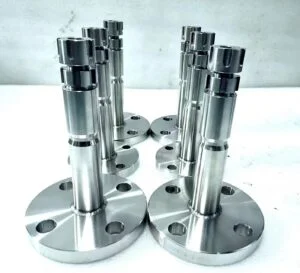
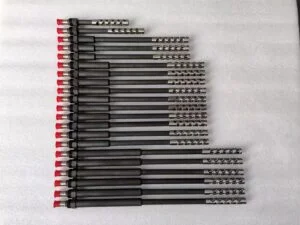
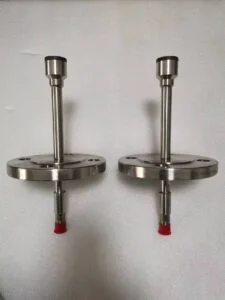
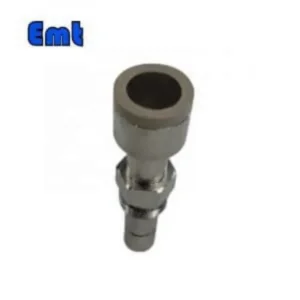
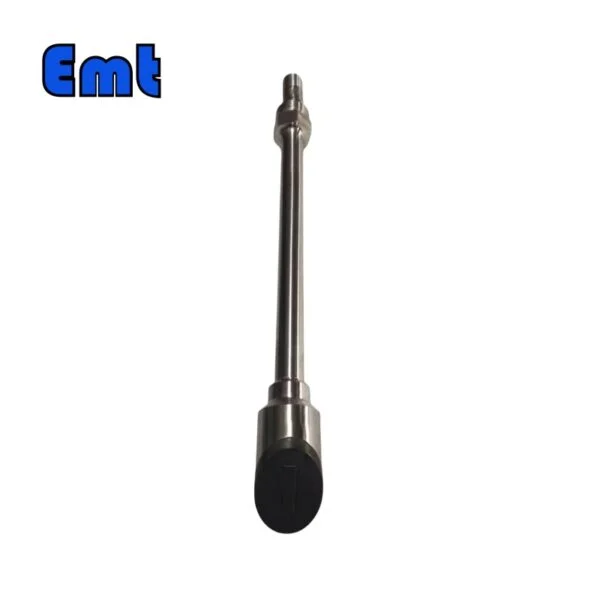
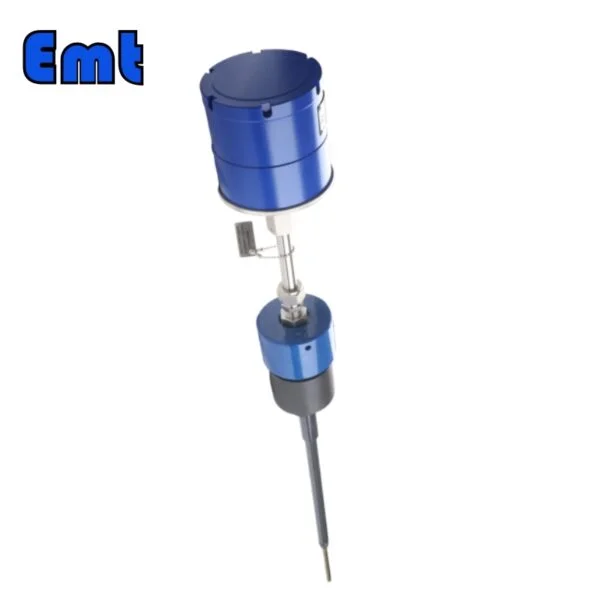
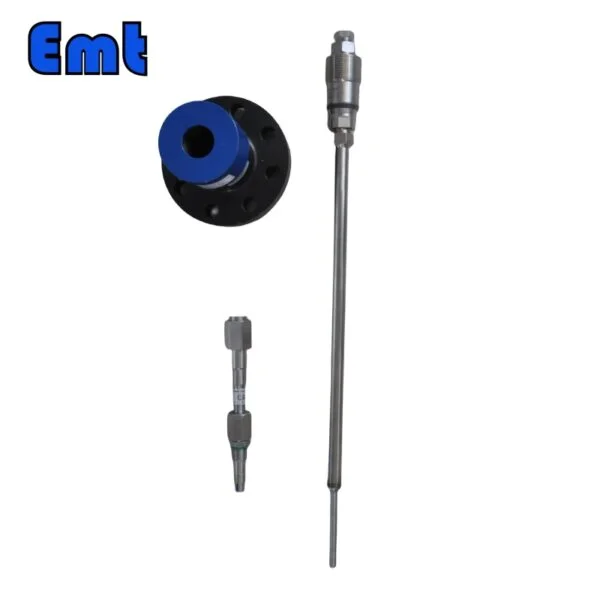
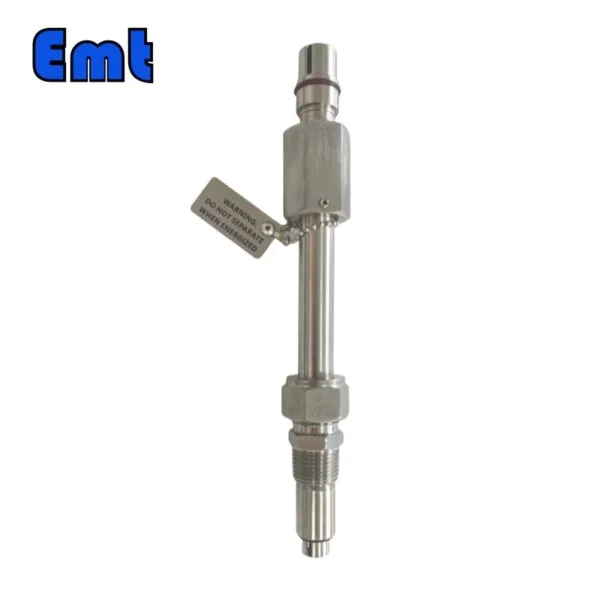
Avaliações
Não há comentários ainda.